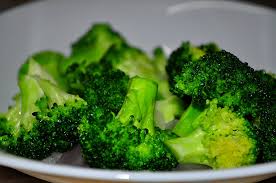Dec 1, 2017Basketball Fueling
Basketball is a game of speed and agility as well as strength and stamina. Developing a nutrition plan for these athletes can help maximize physical and mental performance. But sometimes, athletes also have individual concerns to take into account. In this scenario, our athlete is a female basketball player who is lactose intolerant and very concerned about gaining weight.
Lactose intolerance occurs in individuals who cannot produce lactase, the enzyme that breaks down lactose, a sugar naturally found in dairy products. Symptoms can easily be controlled by modifying one’s diet. The resulting challenge, however, is ensuring adequate calcium intake. Poor calcium intake over time can result in a weakened bone structure and leave the athlete at high risk for fractures and breaks. Here was our advice to help minimize symptoms and maintain adequate calcium intake:
Read label ingredients to identify milk and lactose. Ingredients such as whey, dry milk solids, non-fat dry milk powder, milk by-products, and curds are present in many sports foods. And lactose is often added to many prepared foods such as pancake, bread, and cookie mixes; instant soups and potatoes; margarines and salad dressings; and powdered meal replacements.

Experiment with consuming small amounts of lactose. Some dairy products, such as hard cheeses, have less lactose than a glass of milk. Spreading lactose foods throughout the day can also help. And some individuals can tolerate active culture yogurts, which contain lactase.
Increase high calcium foods. For example, pinto beans, broccoli, oranges, almonds, and fortified soy milk are good examples of dietary calcium sources.
Consider supplements. Lactase enzyme supplements exist in tablet and liquid forms and are available over the counter. If calcium requirements just aren’t being met through foods, a calcium supplement with vitamin D may be appropriate.
Another factor influencing our athlete’s plan was her request to “not gain even one pound.” First, we sat down with her to have an open discussion about her optimal body weight range and any fears or concerns that may be misguided. We evaluated her for any signs of an eating disorder and the female athlete triad (inadequate energy balance, amenorrhea, and low bone mineral density). It is especially important to consider this syndrome in the lactose intolerant female athlete since dietary calcium intake may not be consistently sufficient.
Next, we explained to her the importance of adequate energy balance for the in-season basketball player. Consuming fewer calories than required to meet daily demands (for fear of gaining weight) would mean not having the energy to practice and compete at 100 percent. Practicing and competing in such a state can lead to slowed recovery, mental and physical fatigue, poor performance, and an increased risk of injury.
From there, we coached her on choosing a diet that would provide enough calories but not more than she needed to achieve energy balance. We calculated 2,800 calories as her daily target and offered this advice:
Do not skip meals. Eating three meals and one or two snacks provides steady availability of energy throughout the day to fuel typical afternoon practices. Adopting a consistent pattern of eating every three to four hours also helps maintain lean body mass and controls hunger. This aids in optimizing body composition and prevents overeating at any one meal, especially end-of-the-day meals.
Choose beverages wisely. Recent research has shown that significant declines in basketball-specific performance occur at a dehydration level of just two percent, so being hydrated is of utmost importance. But some beverages also add unneccesary calories. We advised her to choose sports drinks during practices and immediately afterward, and low-calorie (or calorie-free) non-carbonated beverages throughout the rest of the day.
Emphasize recovery nutrition. In the 30 to 40 minutes following a workout, athletes should always consume a post-workout snack, no matter what their weight goals are. This snack should consist primarily of carbohydrate for energy repletion and some protein for muscle synthesis and repair. The goal should be to consume approximately half her body weight in grams of carbohydrate (a 140-pound player should aim for 70g of carbohydrate) and 20g of protein post-workout to refuel for the next practice session.
A lactose intolerant player will need to choose post-workout foods and products carefully by limiting the ingredients discussed above. Nutritional shakes and bars are often formulated with milk products, so we reminded her to read labels and choose soy based supplement products as an advisable alternative. Here is the sample meal plan we provided:
Breakfast:
2 slices whole grain bread
2 Tbsp. peanut butter
1 Tbsp. jelly
1 banana
1 cup calcium fortified orange juice
Lunch:
2 fajitas (2 medium size flour tortillas, 1 cup sautéed vegetables, 4 ounces chicken, 1/4 cup salsa)
Shredded lettuce salad
1 Tbsp. guacamole
1/2 cup pinto beans
1 1/2 cups strawberries
Pre-Practice Snack:
1 orange
15 almonds
Basketball Practice:
32 ounces sports drink
Water
Recovery Snack:
6 ounces low fat, active culture, fruited yogurt
1/4 cup granola cereal with fruit and nuts
Dinner:
4 ounce sirloin steak, trimmed
1 medium red potato roasted with 1 tsp. olive oil
1 cup cooked carrots
Mixed green salad with 2 Tbsp. Italian dressing



